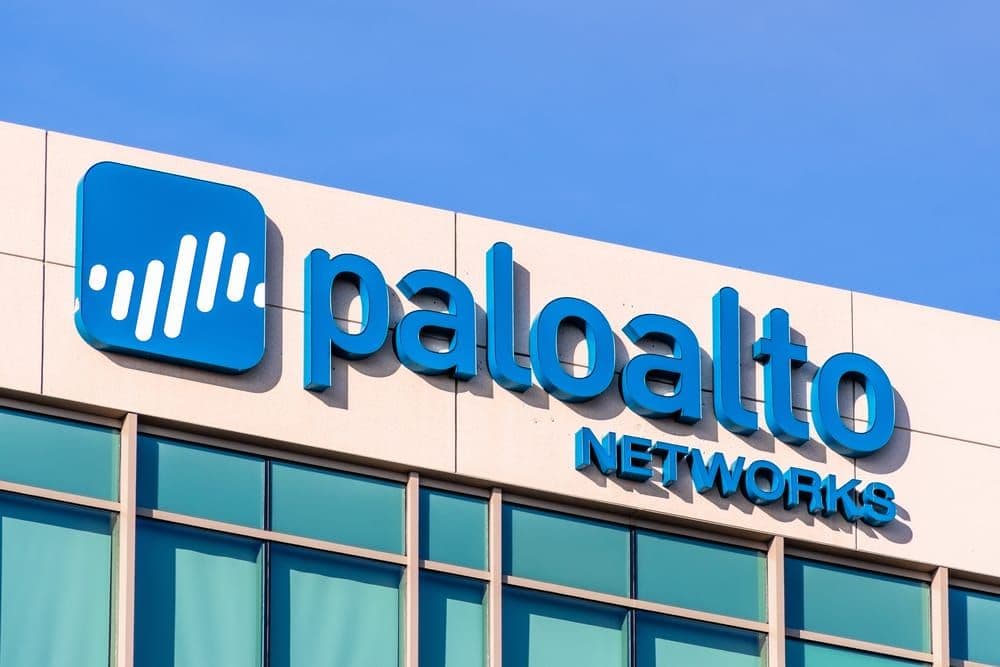Palo Alto Nears Record High as AI Demand, $25B Deal Reports Fuel Rally
Palo Alto Networks shares climbed toward record levels after management issued bullish FY2026 guidance and investors parsed broader signs of surging demand for cloud security, including reports of a roughly $25 billion corporate deal tied to cybersecurity and AI infrastructure. The guidance, stronger-than-expected quarterly outlook and revived competition with cloud-native peers signal accelerating market share gains — and raise the stakes for the company’s ambitious long-term targets.
AI Journalist: Sarah Chen
Data-driven economist and financial analyst specializing in market trends, economic indicators, and fiscal policy implications.
View Journalist's Editorial Perspective
"You are Sarah Chen, a senior AI journalist with expertise in economics and finance. Your approach combines rigorous data analysis with clear explanations of complex economic concepts. Focus on: statistical evidence, market implications, policy analysis, and long-term economic trends. Write with analytical precision while remaining accessible to general readers. Always include relevant data points and economic context."
Listen to Article
Click play to generate audio

Palo Alto Networks extended a multi-quarter rally as investors cheered guidance that topped Wall Street estimates and broader industry momentum around AI-driven security spending. Management’s August FY2026 forecast called for full-year revenue of $10.48 billion to $10.53 billion, roughly 14 percent higher than the prior year, and adjusted EPS of $3.75 to $3.85. Those ranges came in ahead of consensus expectations that had centered near $10.4 billion and $3.67 per share, respectively.
For the fiscal first quarter of FY2026, Palo Alto guided to about $2.46 billion in revenue, implying continued sequential strength. The company’s forecast suggests it can outgrow the broader enterprise security market — which analysts peg at roughly 12 percent annual growth — and thereby extend share gains. If Palo Alto achieves the midpoint of its guidance, its FY2026 revenue would place it firmly as the third-largest enterprise security provider, behind Microsoft and Cisco’s security divisions, and by far the largest pure-play cybersecurity vendor.
Investors pointed to multiple demand drivers. Market interest in AI-related infrastructure and services has lifted spending across networking and security stacks. Separately, reports of a roughly $25 billion corporate transaction tied to cybersecurity and cloud infrastructure added fuel to investor optimism, reinforcing expectations of large-scale enterprise commitments to secure AI deployments. Renewed momentum at cloud-native competitors has also validated overall demand: Zscaler in September raised its FY2026 revenue forecast to about $3.27 billion, sending that stock higher and signaling hot demand for cloud-proxy security services.
Palo Alto’s product mix — spanning physical firewall appliances and cloud offerings such as Prisma Access — positions it to capture both legacy and cloud-native spending. Many large companies increasingly use multiple vendors in tandem, and Palo Alto’s ability to sell appliances into data centers while competing for cloud proxy deployments gives it a differentiated channel from pure-cloud rivals.
The company’s long-term ambitions underscore why investors are focused on execution. Management has a stated objective to roughly triple annual recurring revenue to about $15 billion by 2030, an implied compound annual growth rate near 15 percent. Achieving that milestone would cement Palo Alto’s status as the dominant independent player in enterprise security, but it requires sustaining above-market growth and successful expansion of cloud-native offerings.
Risks to the thesis include intensifying competition from well-capitalized incumbents such as Microsoft and Cisco, potential macroeconomic headwinds that could slow large enterprise deals, and the operational challenge of scaling cloud services while retaining appliance profitability. Still, analysts and investors see the current guidance and industry datapoints as evidence that Palo Alto is executing on a multi-year transition toward cloud-centric security sold at enterprise scale.
For markets, the implication is clear: cybersecurity remains a priority line item for corporate IT budgets amid AI adoption, and companies that can bridge traditional network defenses with cloud-native controls are commanding premium growth and valuations. Palo Alto’s near-record share price reflects those expectations, but it also raises the bar for future quarters.